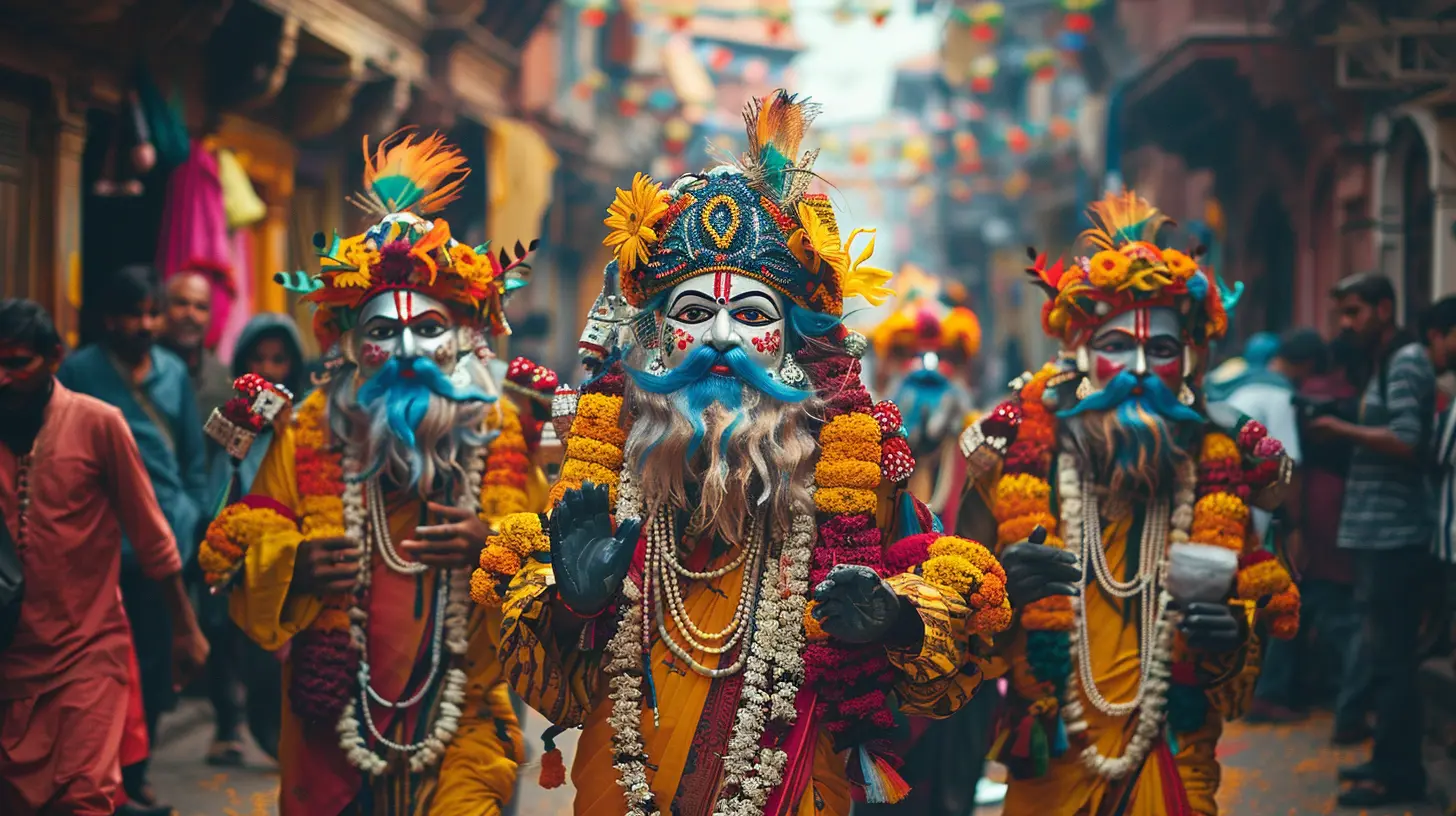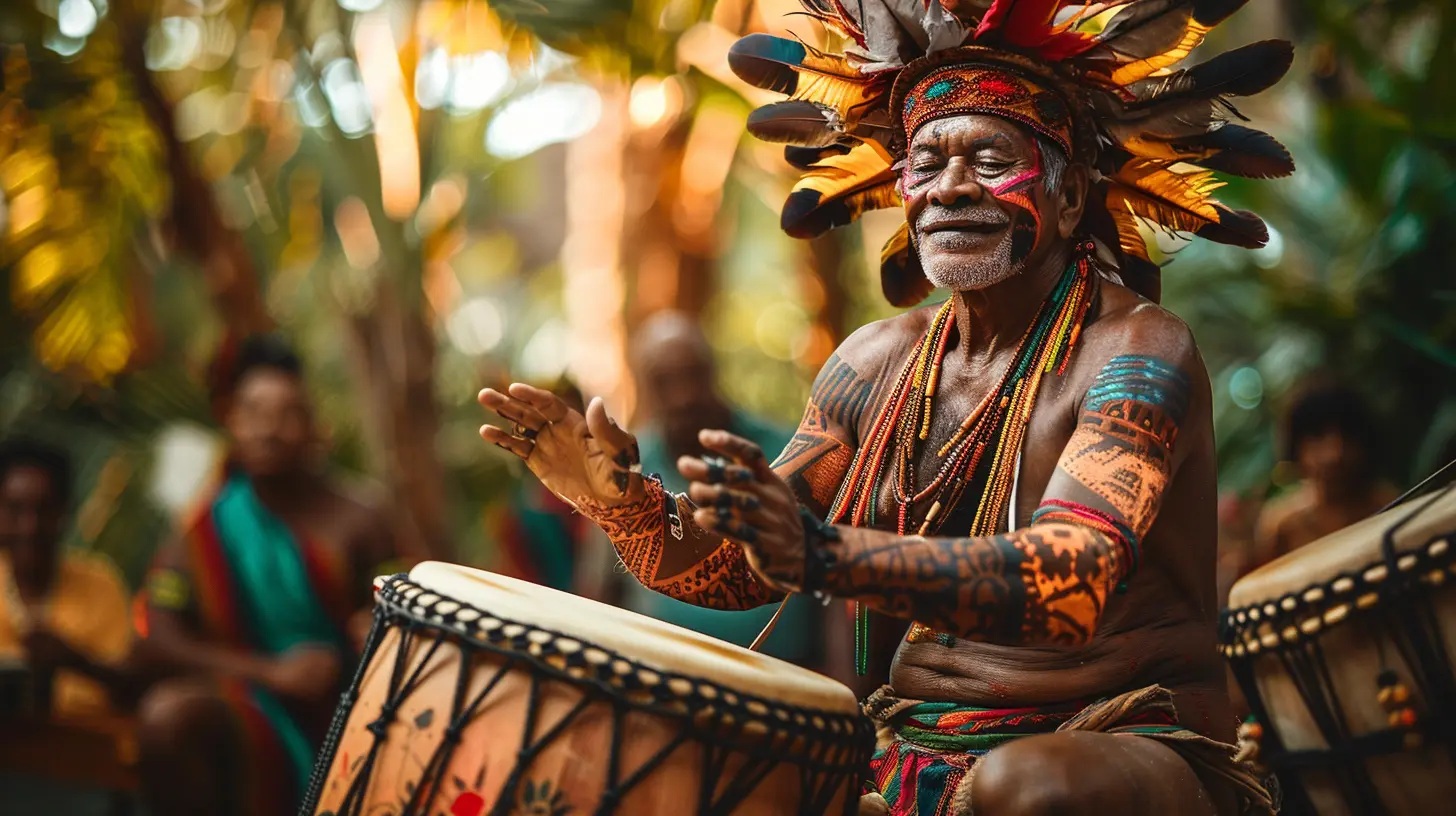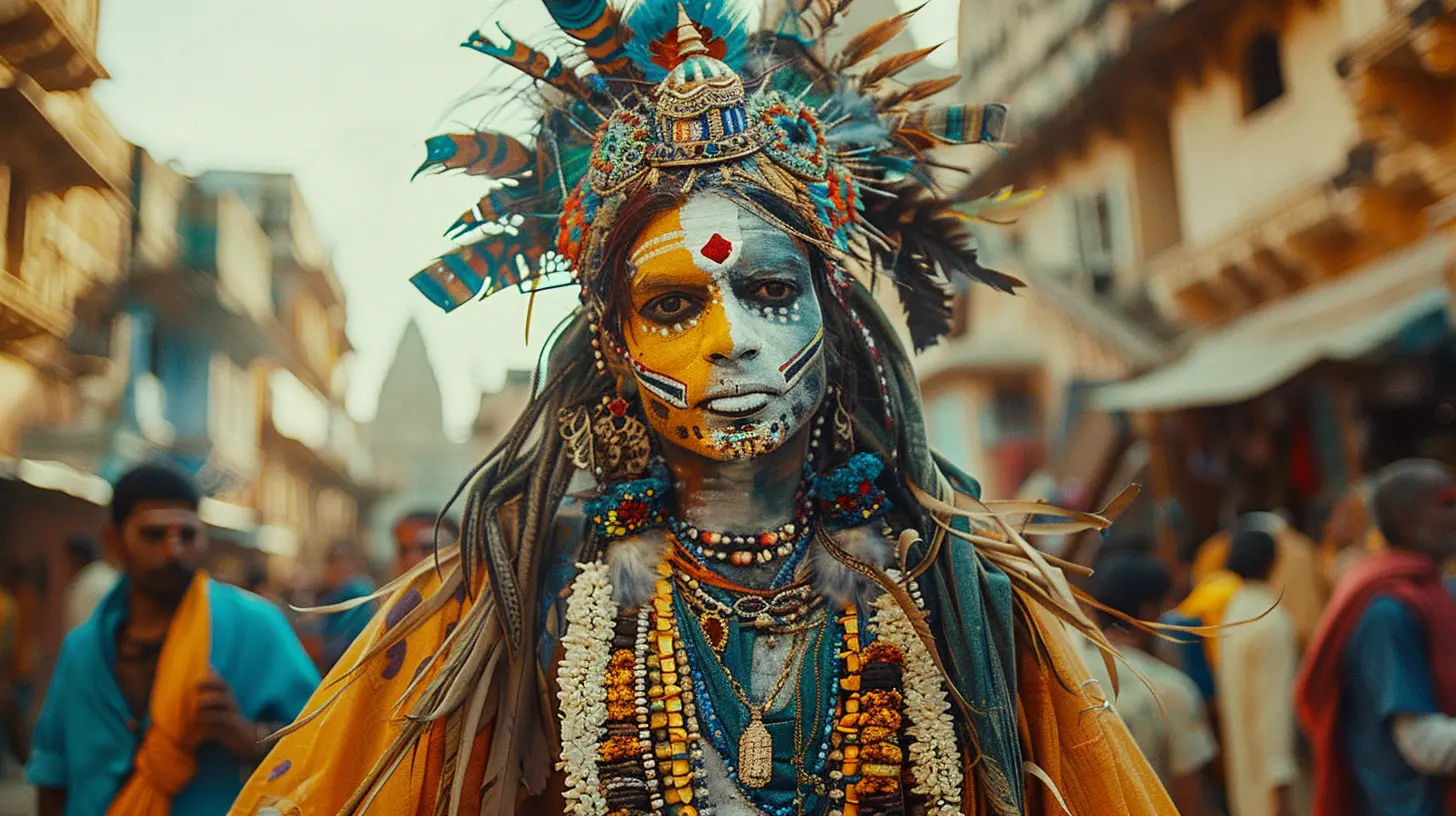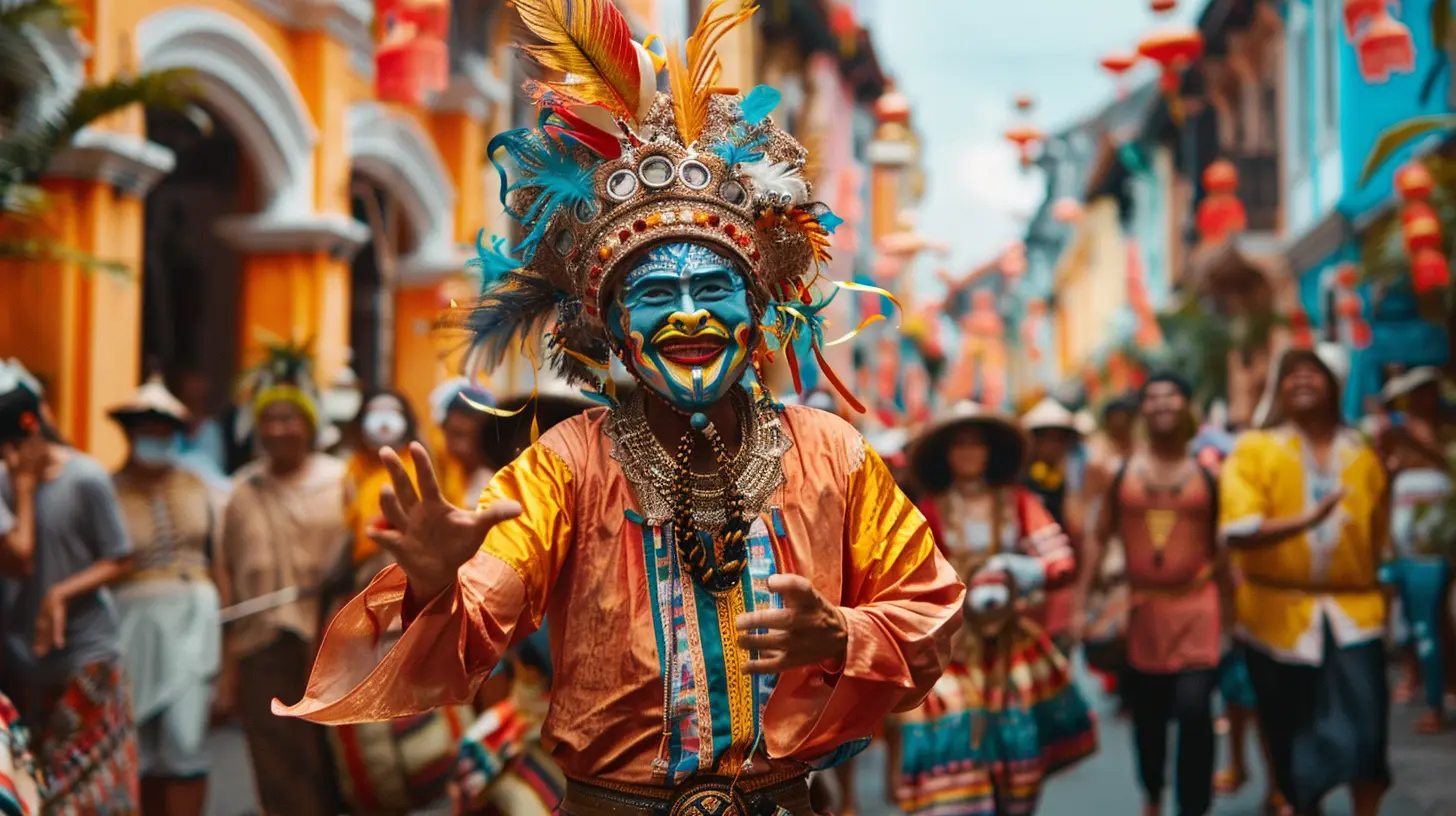The Cultural Roots of Street Performances Worldwide
31 December 2024
Street performances are one of the most vivid reflections of culture and history globally. Whether you're walking through a bustling city square, wandering down a quiet alley, or exploring an open marketplace, there's often a performer capturing the attention of passersby with their artistic skills. But have you ever wondered where this expressive practice comes from? What's the deeper connection between culture and street performances?
In this article, we're diving deep into the historical and cultural roots of street performances, exploring how they’ve evolved and influenced societies across the world. We’ll traverse the globe, visiting different regions and delving into unique traditions while uncovering the common threads that unite street performances worldwide.

What Exactly Is Street Performance?
Before we delve into history, let’s make sure we're on the same page about what a "street performance" really is. Often referred to as "busking," street performance can include anything from music, dance, mime, and juggling, to magic tricks, comedy, and even acrobatics. The idea is simple: artists take their talents to a public space, performing for anyone and everyone. Whether they're looking for tips or just sharing their passion, street performers often break cultural barriers.But why the streets, you ask? Well, historically speaking, not everyone had access to theaters, operas, or concert halls. Many artists turned to the streets, where common folk could appreciate their talents without having to purchase a ticket. In many ways, the street became the stage of the people, a place where art was accessible to everyone.

The Origins of Street Performance: A Walk Down History Lane
Street performances have been around for as long as humanity has been gathering in public spaces. Imagine walking the streets of ancient Athens or Rome. You'd likely encounter musicians playing lyres, poets reciting epics, and storytellers sharing myths and legends. Let's journey through time to uncover the roots of street performance globally.1. Ancient Greece and Rome: Where It All Began
Street performances in ancient Greece and Rome were a common sight—especially during festivals and public gatherings. Actors, dancers, and musicians would entertain large crowds in public squares and markets. In fact, many major Greek plays were initially performed outdoors, and markets like the Roman Forum often saw musicians, storytellers, and acrobats performing for the masses.This public sharing of art wasn’t merely entertainment; it was a cultural necessity. These gatherings allowed people from all walks of life to experience culture, philosophy, and, sometimes, political satire. The performers weren’t just there to make people laugh or feel awe—they often played a critical role in shaping cultural discourse.
2. The Middle Ages: Minstrels, Jugglers, and Troubadours
Fast forward to medieval Europe, and public performance took on different, more structured roles. Minstrels, troubadours, and jugglers traveled from town to town, entertaining the masses. They often performed in village squares or during public festivals, telling stories of heroic knights, tragic love, and epic battles through music and verses.Interestingly, these entertainers were often seen as both figures of entertainment and news-bearers since they would share tales or gossip from other regions. They became vital in transferring cultural knowledge and providing a voice for marginalized or unheard communities.
3. Asia: A Blend of Tradition and Talent
Street performances hold a vital place in Asian history as well. In China, during the Tang and Song dynasties, street entertainers, such as acrobats, musicians, and storytellers, frequently performed in marketplaces. Chinese puppet shows, mask dances, and opera performances are also worth noting. Chinese street performances often carried significant cultural messages, passing on classic tales of honor, integrity, and wisdom.In India, street performers—known as "kalakars"—have existed for centuries. Traditional Indian street performances ranged from snake charmers to folk dancers, often depicting mythological stories or rural life. The art of Kathputli, or traditional Indian puppetry, holds significance in Indian culture, and it's believed to have originated as a street performance form.
Japan, too, boasts a rich history of street performance, especially in the art of storytelling. Rakugo, a form of comedic storytelling, involves a single performer narrating multiple characters' roles, often on the streets or in small theaters.
4. Africa: Drumming and Dance for the People
Africa's street performances are often reflections of deep-rooted cultural traditions, prominently featuring rhythmic drumming and dance. The connection between music, performance, and storytelling is incredibly important in African culture. Performers use djembe drums, kora (a type of harp), and other instruments to narrate history, celebrate milestones, and honor religious rituals.In parts of West Africa, the griot (a type of traveling musician/storyteller) tradition has thrived for centuries. Griots are integral to African society, acting as both entertainers and historians, preserving the oral traditions and stories of African villages and tribes through performance.

The Renaissance of Modern Street Performance
Street performances started to take on a more visible role again in the 19th and 20th centuries, with artists flocking to major urban centers to showcase their skills. In cities like Paris, London, and New York, entire areas became synonymous with street performers. Think about the vibrant atmosphere of Montmartre in Paris or Covent Garden in London—both famous for attracting talented performers, many of whom became notable entertainers.Covent Garden: The Birthplace of Modern Busking
Fast-forward to modern times, and London’s Covent Garden stands out as one of the most well-known hubs for buskers. From magicians and musicians to talented dancers, street performers have captivated audiences at this historic location since the 17th century. Covent Garden's evolution into a bustling center of street performance has inspired other cities around the world to embrace similar cultures.Latin America: Street Art as Political Expression
Street art and performance have also played essential roles in Latin American political and social movements. In the 1970s and 80s, as several Latin American countries faced oppressive political regimes, street performances began to serve as an outlet for protest. Artists would use their performances to highlight human rights abuses, poverty, and corruption.Street performers in these regions not only entertained but mobilized mass movements and raised awareness. Today, in cities like Buenos Aires and Mexico City, street performances remain common, with everything from tango dancers to puppet shows taking place in public spaces, often carrying with them messages of resistance or cultural pride.
Festivals and Street Performance: A Modern-Day Celebration
Festivals have always been a key time for street performances. From Rio’s Carnaval to Venice’s Carnevale, street artists transform public spaces into stages teeming with life. Musicians, dancers, and actors bring these festivals to life, immersing attendees in vibrant traditions.In modern times, some festivals are even created for street performers specifically, like the well-known Edinburgh Festival Fringe, which celebrates all types of street art, from theater, comedy, and dance, to music and spoken word.
Why Are Street Performances Still Relevant Today?
Now that we've looked at the deep-rooted history, you might be wondering: Why are street performances still a thing? In the age of social media, Netflix, and virtual concerts, do people still value them?The answer is a resounding YES. Street performances provide a raw, unedited version of art that you can’t always get from a screen. There's something intimate and human about standing mere feet away from a performer, watching their creativity unfold in real-time. They offer moments of spontaneous joy, laughter, awe, and sometimes, deep thought.
Street performers connect us with our shared humanity. They make art accessible to all, reminding us that culture exists not only in museums or concert halls but right around every corner, available for anyone willing to stop and appreciate it.
Globalization and Its Effects on Street Performance
In recent years, globalization has had a significant impact on street performances. With artists traveling more freely and sharing ideas across borders, there's been a delightful melding of styles and traditions. In cities like New York, Tokyo, and Berlin, it's not uncommon to see a mix of traditional art forms alongside modern, avant-garde street performances. A flamenco guitarist might perform next to a West African djembe drummer, creating a fusion of sounds that transcends cultural boundaries.This cross-cultural pollination of art through street performance is a reflection of our ever-connected world. It shows that, while we come from different backgrounds, we can appreciate and celebrate our differences through the universal language of art.

Conclusion: The Timeless Appeal of Street Performance
Street performances have evolved greatly over thousands of years, but their core essence remains unchanged. They reflect the soul of a society, provide joy to everyday people, and make art accessible to all. From ancient Greece to modern-day New York, they stand as a testament to the power of creativity, spontaneity, and cultural expression.Next time you pass a street performer on your way to a meeting or while exploring a new city, stop for a moment. Enjoy the show. You’re experiencing a tradition that connects us all, across time and continents. Because at the end of the day, art isn’t confined by walls—it belongs to the streets.
all images in this post were generated using AI tools
Category:
Cultural ExperiencesAuthor:

Tracie McAdams
Discussion
rate this article
10 comments
Eliza Elliott
Great insights! It’s fascinating how street performances reflect cultural diversity and connect communities across the globe.
March 17, 2025 at 5:42 AM

Tracie McAdams
Thank you! I'm glad you found the insights fascinating. Street performances truly are a vibrant reflection of our diverse cultures and a powerful way to connect communities.
Haze Kearns
What a fascinating exploration of street performances! It’s amazing how these vibrant expressions of culture connect us all, showcasing the diverse talents and stories from around the globe. Love it!
February 12, 2025 at 4:18 AM

Tracie McAdams
Thank you! I’m glad you enjoyed it—street performances truly highlight the rich tapestry of global cultures and shared human experiences.
Valentina Beck
This article beautifully highlights the diverse cultural significance of street performances around the globe. It’s a fascinating exploration of how these vibrant expressions connect communities, celebrate traditions, and bring joy to public spaces.
January 24, 2025 at 4:31 AM

Tracie McAdams
Thank you for your insightful comment! I'm glad you found the exploration of street performances and their cultural significance engaging.
Thistle Williams
This article beautifully highlights the rich tapestry of street performances across cultures, showcasing their significance as expressions of community and heritage. It’s a reminder of the universal language of art that connects us all.
January 20, 2025 at 5:52 PM

Tracie McAdams
Thank you for your thoughtful comment! I'm glad you appreciated the exploration of street performances and their cultural significance. Art truly does unite us all!
Quentin McClendon
What a delightful journey through the vibrant world of street performances! It's amazing how these artists bring culture to life, connecting communities and visitors alike. I love how each performance tells a unique story, reflecting the heart and soul of its surroundings. Truly inspiring!
January 15, 2025 at 4:36 PM

Tracie McAdams
Thank you for your wonderful insights! Street performances are indeed a beautiful expression of culture and connection. I'm glad you enjoyed the journey!
Dakota McKeehan
Ah, yes, nothing says “authentic culture” quite like a guy in a banana suit juggling flaming torches while a crowd gathers for the inevitable viral TikTok moment. Truly the pinnacle of human expression! Forget museums; let’s all just hang out on the street!
January 8, 2025 at 5:04 AM

Tracie McAdams
Street performances blend humor and artistry, reflecting diverse cultural expressions. While it may seem frivolous, these acts often foster community and creativity in public spaces.
Lincoln McGuire
This article beautifully highlights the rich tapestry of street performances across cultures. From the vibrant jesters of medieval Europe to the dynamic rhythms of modern urban scenes, it underscores how these artists preserve traditions, foster community, and engage diverse audiences globally.
January 7, 2025 at 4:10 PM

Tracie McAdams
Thank you for your thoughtful comment! I'm glad you enjoyed the exploration of street performances and their cultural significance.
Spencer Thompson
Great article! It beautifully highlights how street performances reflect diverse cultures and foster community connections across the globe.
January 2, 2025 at 3:44 PM

Tracie McAdams
Thank you! I'm glad you enjoyed it and found the cultural connections meaningful.
Naomi Hernandez
What a fascinating exploration of street performances! It's incredible how these vibrant expressions of culture connect us all, transcending borders and languages. Each performance tells a story, celebrating tradition and creativity. Let’s continue to support these artists and appreciate the rich tapestry of cultures they bring to life!
January 1, 2025 at 6:05 AM

Tracie McAdams
Thank you for your thoughtful comment! I completely agree—street performances truly showcase the beauty of global culture and creativity. Let's continue to celebrate and support these amazing artists!
Mae Diaz
This article beautifully captures the essence of street performances as a vibrant expression of culture. It’s inspiring to see how different communities showcase their heritage through art. Thank you for shedding light on such a rich and diverse tradition!
December 31, 2024 at 4:44 AM

Tracie McAdams
Thank you for your kind words! I'm glad you found the article inspiring and that it resonated with the cultural richness of street performances.
MORE POSTS

Tropical Getaways: Caribbean Beaches You Can’t Miss

Mountain Biking Trails That Will Take Your Breath Away

From Sunrise to Sunset: A Day in the Life at the World's Best Beaches

Private Island Paradises That Promise Ultimate Relaxation

How Traditional Dance Reminds Us of Cultural Identity

Beach Resorts Perfect for a Winter Escape

The World’s Most Scenic Caverns for a Peaceful Underground Experience